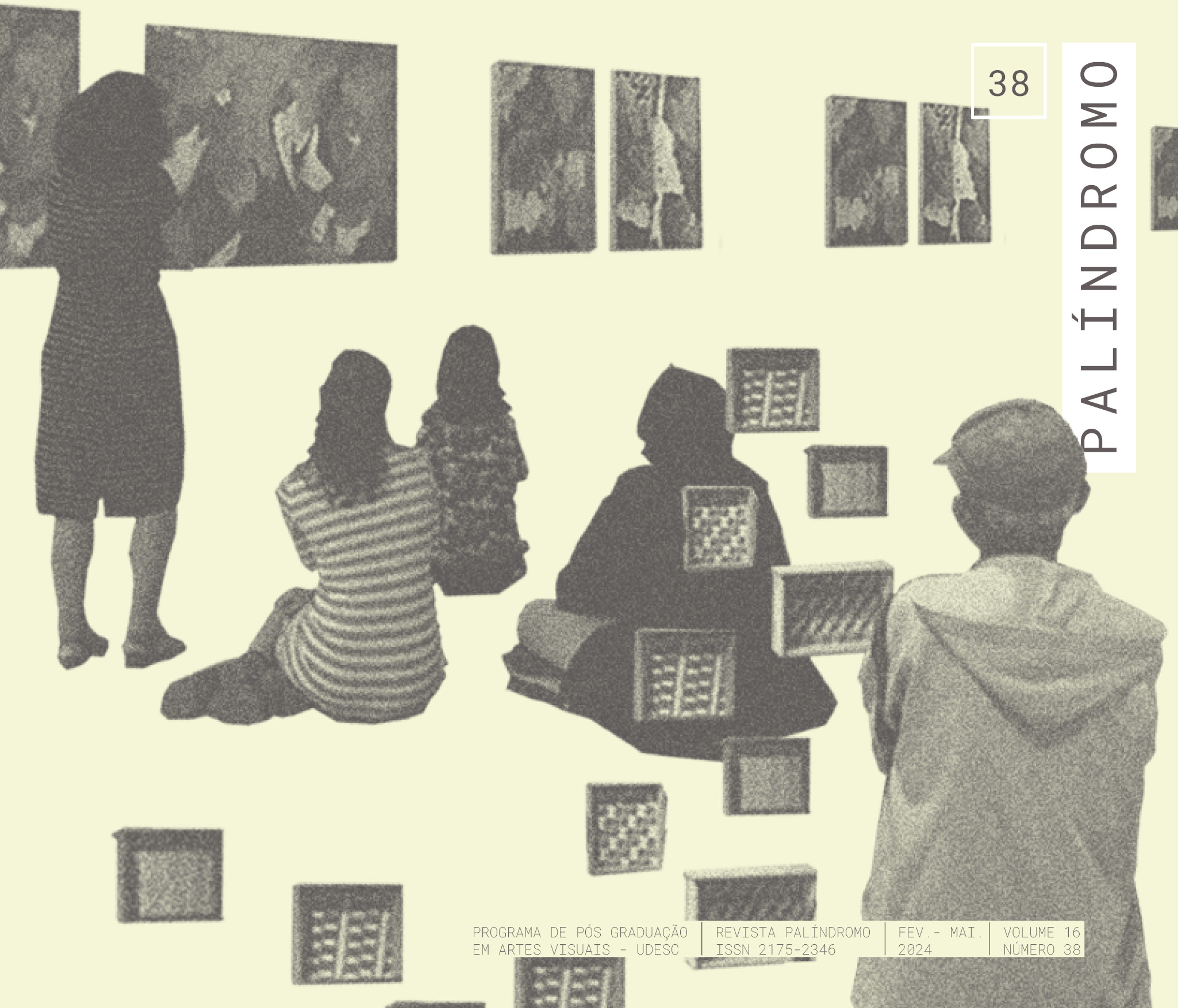Uma caixa de chocolates sobre Weimar:aproximações entre arte e design na produção de Barbara Bloom
DOI :
https://doi.org/10.5965/2175234616382024e0011Mots-clés :
Barbara Bloom, arte e design, arte e turismoRésumé
A artista norte-americana Barbara Bloom, desde meados dos anos 1970, tem construído sua investigação a partir de uma grande diversidade de meios artísticos, ao realizar interlocuções frequentes com os campos da fotografia, do cinema, da literatura, da música, da propaganda e do design. O presente artigo tem como objetivo compreender a aproximação da artista ao universo do design contemporâneo a partir da análise do trabalho intitulado Weimar, past… future, and now? [A chocolate box about Weimar], datado de 1995. A análise foi construída à luz da noção de “design total”, desenvolvida por Hal Foster no início da década de 2000, e a partir da comparação entre as estratégias adotadas pela artista e alguns princípios de funcionamento do design comercial, explicitados pelo guia “Princípios Universais do Design” escrito por William Lidwell, Kristina Holden e Jill Butler. Como resultado, evidencia-se as formas como o trabalho de Bloom assimila e mimetiza os modos de atuação do design comercial a fim de subvertê-lo e redirecioná-lo, com o propósito de despertar no espectador uma visão mais distanciada e questionadora sobre sua própria realidade cotidiana.
Téléchargements
Références
BLOOM, B. et al. The Collections of Barbara Bloom. New York: Steidl/ICP, 2008. DOI: https://doi.org/10.1016/j.cub.2008.04.044
BUCHANAN R.; MARGOLIN, V. (eds.). Discovering design: explorations in design studies. Chicago: University of Chicago Press, 1995.
FOSTER, H. “Design as Crime”. In: COLES, Alex (ed.). Design and art. Cambridge, Mass.: MIT Press, 2007, pg. 66-73.
FOSTER, H. et al. Art since 1900 - modernism, antimodernism, postmodernism. Vol 2. New York: Thames & Hudson, 2004.
HENKE, B. Goethe®: Advertising, Marketing, and Merchandising the Classical. In: HENKE, B.; RICHTER, S.; KORD, S. (ed.). Unwrapping Goethe’s Weimar: essays in cultural studies and local Knowledge. New York: Camden House, 2000, p. 15-31.
JOHNSON, K. Barbara Bloom: A portrait of the artist, in bits and pieces. The New York Times, fevereiro de 2008. Disponível em https://www.nytimes.com/2008/02/08/arts/design/08bloo.html, acesso em 21/07/2020.
LIDWELL, W.; HOLDEN K.; BUTLER J. Princípios Universais do Design. Porto Alegre: Bookman, 2010.
RICHTER, S. Like a box of chocolates… In: HENKE, B.; RICHTER, S.; KORD, S. (ed.). Unwrapping Goethe’s Weimar: essays in cultural studies and local Knowledge. New York: Camden House, 2000, p. 01-09.
BÜRGER, P. Teoria da vanguarda. São Paulo: Cosac Naify, 2008.
Téléchargements
Publiée
Comment citer
Numéro
Rubrique
Licence
(c) Tous droits réservés Marilia Solfa 2024

Ce travail est disponible sous la licence Creative Commons Attribution 4.0 International .
DECLARAÇÃO DE DIREITOS AUTORAIS
a. Os artigos publicados pela revista são de uso gratuito, destinados a aplicações acadêmicas e não comerciais. Todos os direitos autorais são atribuídos à revista. Os artigos cujos autores são identificados representam a expressão do ponto de vista de seus autores e não a posição oficial da Revista Palíndromo. O (s) autor (es) compromete-se sempre que publicar material referente ao artigo publicado no Palíndromo mencionar esta publicação da seguinte forma:
Este artigo foi publicado originalmente pela revista Palíndromo em seu volume (coloque o volume), número (coloque o número) no ano de (coloque o ano) e pode ser acessado em: http://www.revistas.udesc.br/index.php/palindromo
b. Plágio, em todas as suas formas, constitui um comportamento antiético de publicação e é inaceitável. A revista Palíndromo utiliza o software iThenticate de controle de similaridade


